Why all the Changtai? No reason other than the fact that they bubbled to the top of consciousness, and that Kenny so kindly provided a bunch of samples.
I've previously encountered the "zhengpin" and "jingpin" (4th and 3rd grades, respectively) of this 2009 Banzhang recipe, and, while the opportunity to examine the effect of the different Changtai grades while keeping mountain/year constant has been excellent, the lower two grades of this cake weren't very impressive.
During those two previous articles, Herr Dr. Kim reminded me that he and I had bought the above cake together from Taobao, sometime last year. I checked my e-mail, where I had a similar conversation with Kim last autumn:
Herr Dr. Kim: "We bought some 2009 Banzhang - have you tried it?"
Me: "Ung? Ook? Did we?"
I dug into my spreadsheet and, lo, it seems I have one cake of this, and paid 45 euro for it. On subsequent digging through my stacks, I discovered the above. To my delight, it seems to be the "zhenpin" (2nd grade) of the very same recipe that I've been tasting.
If the zhengpin (4th grade) was pure plantation with a wisp of Banzhang, and the jingpin (3rd grade) opened well, but then collapsed into sour plantation, how about this 2nd grade cake?
I am reassured from the start. The tiny, bush leaves of the lower grades have been replaced with fragments of much larger leaves, each of which is furry with down.
It has a gentle, tobacco-sweet aroma that was almost absent from its lesser cousins. It looks much more "boutique" than its "mass production" relatives.
Dropping the dry leaves into the dark, warm, damp depths of the rinsed pot releases a welcome plummy scent. Suddenly, it seems as if everything is going to work out well, after all.
The soup, as you may see below, is yellow-orange, and has mixed scents of sweet grain and leather. Decent flavours of the same, with some bitterness, fill out the finish.
It cannot escape being blended with more aggressive plantation leaves - this is just a standard-label Changtai, after all - and their sour, green / brown character may be detected. However, they are much diminished compared with the plantation contribution of the lower grades.
Pleasant tobacco scents are left in the nose, and I even detect a slight cooling sensation on the tongue.
Drinkable, this is probably the lowest acceptable (or even tolerable) quality version of this cake, and, even then, I cannot imagine buying more.
For the first time in quite a few days, I have a very enjoyable tea session. In later infusions, the Banzhang character remains detectable, while the plantation contributions do not come to dominate. It is a mainstream cake, but there is something of Banzhang in it.
I reflect on how much I compare these cakes to the few samples of pure, old-tree Banzhang with which I have been fortunate enough to be provided by generous tea-chums (notably, a 2008 Laobanzhang and 2008 Xinbanzhang, thanks to Nada). Those actual laoshu samples show that Banzhang is sweet, slightly grain-like, slightly leathery, but, above all, clean and pure. It has been a long time since I tried them, but they still remain clearly in my "taste" memory, and provide a valuable comparison for later cakes. If you can find some good samples, I would recommend chasing them - even if they cost quite a bit (as they will for Banzhang, no doubt), I am of the mind that it would be worth the outlay.
It's entirely possible to extrapolate what general Banzhang might taste like, from trying lots of lesser-quality "Lao Banzhang" cakes - the common thread between them all is, in all likelihood, two things: Banzhang, and plantation. If you have a handle on what bushes tend to taste like, then you should be able to form a good idea of actual Banzhang.
Addendum
March, 2014
The rinse looks a little brown, as if a touch aged. The scent is surprisingly pleasant and long-lasting. Its flavour is now dark, quite smooth, and cooling. Five years of aging works wonders on strong, basic tea. The resulting sweet, woody character is most enjoyable - this is an encouraging outcome.

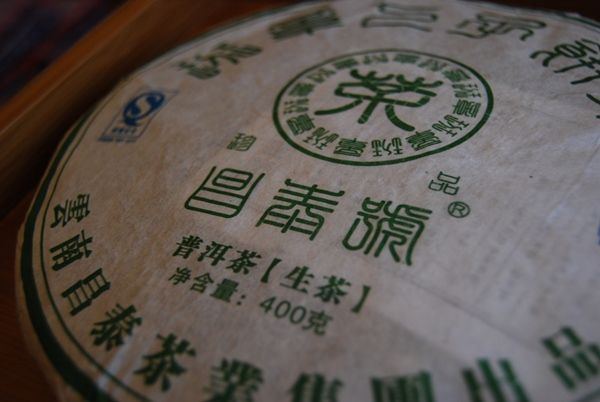

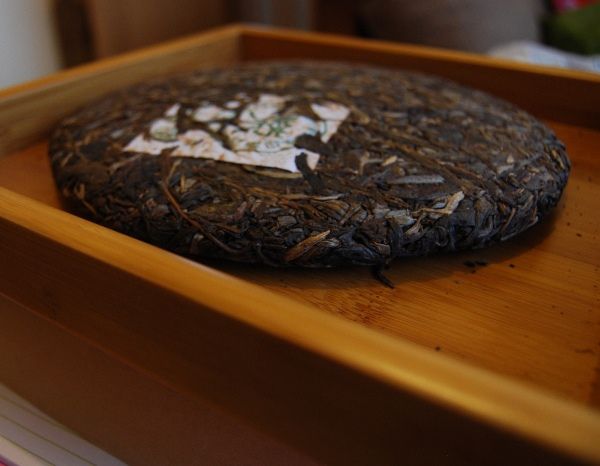
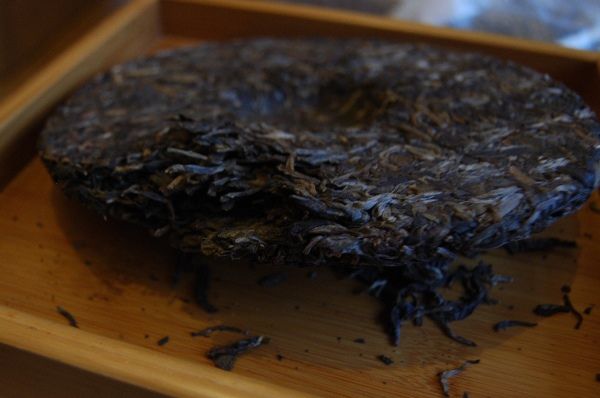
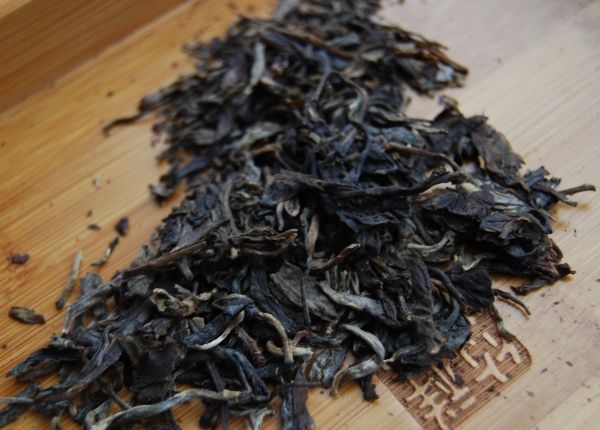
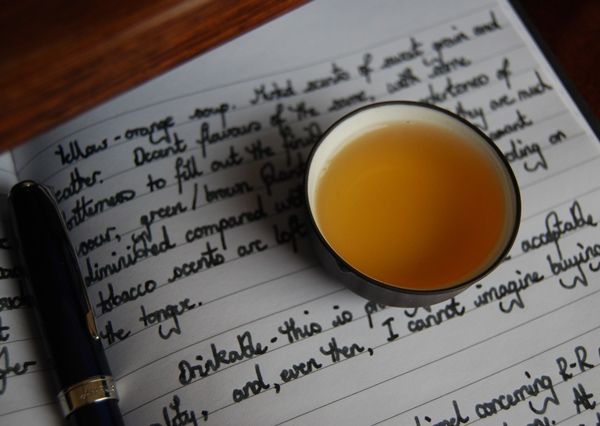
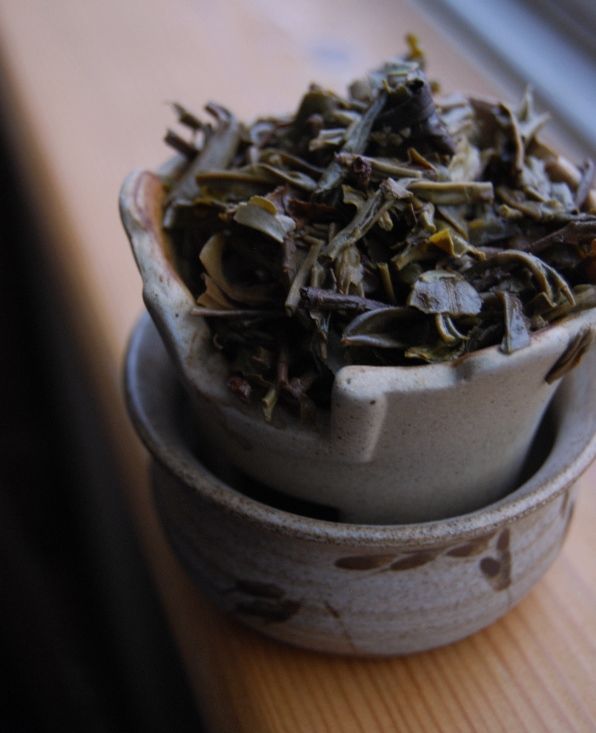
6 comments:
Changtai has never been known to make good tea outside of perhaps the Yiwu region..... so it's perhaps no surprise that this cake is not particularly good...
Agreed - although I recommend trying some of the older Qianjiafeng Jinzhushan recipe, which, while not likely to change one's world, is very decent for the fairly low price.
Toodlepip,
Hobbes
Great news that you finally tried it :)...
I agree it isn't the best cake, but a
rather enjoyable one, although too expensive for that, esp. in contrast to the ones from EoT.
Dear Kim,
It's a nice comparison to make, though. Put it this way, I'm glad to have this cake and not the zhengpin or jingpin. :)
The price of most things compared to the Essence of Tea line seems high for what one gets, but maybe that's just because we're being spoiled with good maocha by Nada.
Best wishes,
Hobbes
P.s. Did my parcel of samples arrive? It weighed 700g. ;)
http://puerhcollection.blogspot.com/2009/08/1st-hong-kong-international-tea-fair_16.html
I thought Sp1key had some interesting thoughts on the cake...
--shah8
p.s. I've always found the hierarchy of xxx-pin confusing in the 2005 Yichanghao Zhengpin article.
Sp1key's comments are particularly relevant, because I bought a few of the cakes that he listed on that page via him. :)
Good stuff they are, too!
Toodlepip,
Hobbes
Post a Comment